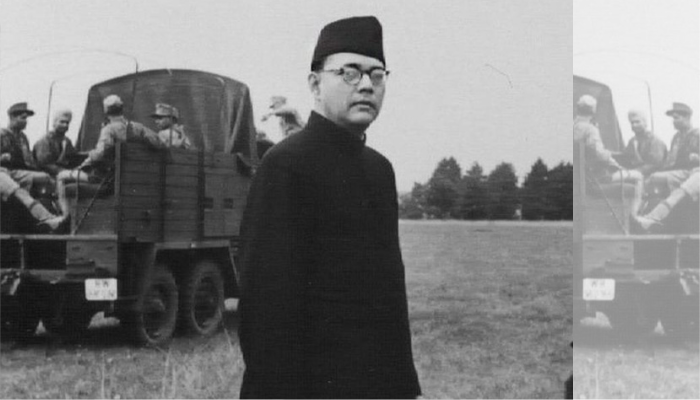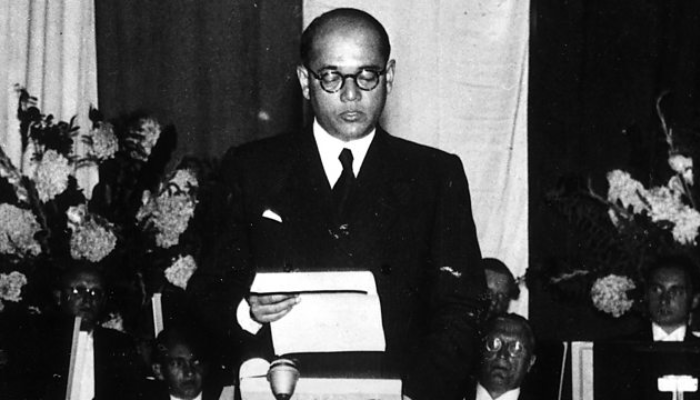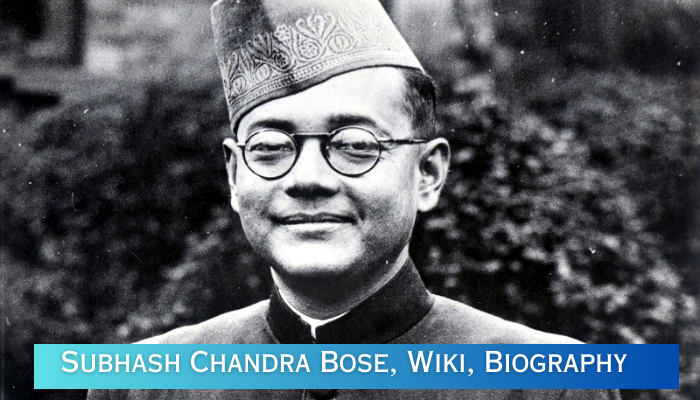Biography
Subhash Chandra Bose was a legendary Indian freedom warrior.
He was born in Cuttack, Bengal, to wealthy parents. He earned a philosophy degree in Calcutta. He was selected for the Indian Civil Services (ICS) but declined since he didn’t want to work for the British government.
Bose joined the Indian National Congress (founded on December 28, 1885) in 1921. He founded ‘Swaraj’ newspaper.
He was All India Youth Congress President and Bengal State Congress Secretary. He became Calcutta Municipal Corporation CEO in 1924. He became Calcutta mayor in 1930.
Bose wrote ‘The Indian Struggle’ about the 1920–1942 Indian independence movement. The British government banned the book. He coined ‘Jai Hind’. His enviable personality and influence encouraged many Indians to fight for freedom. He was known as Netaji.
Subhash Chandra Bose Photo

Wiki
| Full Name | Netaji Subhash Chandra Bose |
| Nick Name | Netaji |
| Born (Date of Birth) | January 23, 1897 |
| Died | August 18, 1945 |
| Birthplace | Cuttack, Odisha |
| Gender | Male |
| Movements | Indian Freedom Movement |
| Hometown | |
| Associations (Political Party) | Indian National Congress; Forward Bloc; Indian National Army |
| School | Ravenshaw Collegiate School |
| College | Cuttack; Presidency College, Calcutta; University of Cambridge, England |
| Profession | Politician |
| Nationality | Indian |
| Religion | Hinduism |
| Political Ideology | Nationalism; Communism; Fascism-inclined |
| Father | Janakinath Bose |
| Mother | Prabhavati Devi |
| Siblings | 6 sisters and 7 brothers |
| Spouse | Emily Schenkl |
| Children’s | 1 |
| Son | |
| Daughter | Anita Bose Pfaff |
Birthday
India celebrates ‘Parakram Diwas’ on Bose’s birthday. On January 23, it’s celebrated.
| Netaji Subhash Chandra Bose Birthday | January 23, 1897 |
Jayanti
Every January 23, Subhash Chandra Bose Jayanti commemorates his nation-building work. In Cuttack, Odisha, he was born this day. To honor Subhash Chandra Bose’s bravery, this day is called ‘Parakram Diwas’. On this day, schoolchildren, teachers, government officials, and cross-party politicians honor Netaji.
Died
When INA soldiers were captured or surrendered, Subhash Chandra Bose died in a plane crash on August 18, 1945, en route to Tokyo through Taiwan. An airplane crash over Taipeh, Taiwan (Formosa), killed Subhash Chandra Bose on August 18, 1945. Even though many people think he escaped the plane crash, there isn’t a lot of information out there..✒️
Family
Subhash Chandra Bose Family
| Subhash Chandra Bose Father | Janakinath Bose |
| Subhash Chandra Bose Mother | Prabhavati Devi |
| Siblings | 6 sisters and 7 brothers |
| Subhash Chandra Bose Wife | Emily Schenkl |
| Children’s | 1 |
| Son | |
| Subhash Chandra Bose Daughter | Anita Bose Pfaff |
Wife
Subhash Chandra Bose got married to Emilie Schenkel. He has a daughter, Anita Bose! He rarely spoke publicly about Subhash Chandra Bose’s personal life. He prioritized the nation over his family. His only goal was to see a sovereign India someday!
Political Career
Bose’s Ideology: Netaji Subhash Chandra Bose had a complex ideology that changed over time. His main ideologies are:
Complete Independence: Bose wanted complete freedom from British colonial rule immediately. He refused to negotiate anything less than absolute self-rule for India.
Nationalism: He was a passionate nationalist who wanted a unified India. Bose urged Indians to work together for independence despite regional and religious divisions.
Anti-Imperialism: British colonialism was strongly criticized by Bose. He felt India and other colonized nations had the right to self-determination and that colonialism was cruel.
Socialism: Bose was motivated by socialism and supported a planned economy that targeted the masses. He wanted to reduce economic inequality and social inequality in India.
Secularism: Bose championed secularism and felt religion should not divide Indian society. He supported a secular, inclusive India where all religions could coexist harmoniously.
Non-Pacifism: Bose supported stronger independence measures than Mahatma Gandhi. He suggested a more active attitude toward the British Empire than passive resistance.
International Collaboration: During WWII, Bose tried to get allies to help India’s cause. He joined forces with Axis powers like Germany and Japan to fight British colonization.
Leadership and Militarization: Bose led with discipline and military precision. His Indian National Army (INA) was meant to physically confront British sovereignty in India.
Subhash Chandra Bose was steadfast in his pursuit of India’s independence and willing to try new methods. While his World War II tactics and alliances are controversial, his charismatic leadership and dedication to Indian independence are still admired.
Indian National Congress and Subhash Chandra Bose
Subhash Chandra Bose had a tense relationship with the governing Indian National Congress (INC), which fought for India’s independence. An outline of his INC involvement:
Early Involvement: While studying in England, Bose joined the Indian National Congress. He was influenced by the Congress and Mahatma Gandhi’s nonviolent and civil disobedience principles.
Leadership in INC: Due to his intelligence and leadership, Bose progressed fast in Congress. He was Indian National Congress president in 1938 and 1939.
As Congress President, he supported a more aggressive independence strategy. He disagreed with the Congress leadership, which followed Gandhi’s nonviolence and settlement with the British.
Resignation from INC: Due to strategic disagreements with the Indian National Congress leadership, Bose resigned as president in 1939. He thought nonviolent means might not be enough to free India.
His resignation split the Congress, with some backing him and others following Gandhi.
Forward Bloc Formation: Bose created the Forward Bloc in 1939 to fight British colonial rule more directly after leaving the INC. This contradicted INC nonviolence.
War II and International Alliances: Bose sought worldwide backing for India during WWII. He contacted Axis states like Germany and Japan to gain their support for India’s independence.
Subhash Chandra Bose’s relationship with the Indian National Congress was marked by his early support, his climb to leadership, and his resignation over strategy. Bose’s approach to independence was more militant and aggressive than Gandhi’s. His subsequent establishment of the Forward Bloc and collaboration with Axis countries during World War II further separated him from the Congress and complicated his reputation in India’s freedom struggle.
Subhash Chandra Bose leaves India: One of India’s most exciting and daring moments in its freedom war was Subhash Chandra Bose’s escape.
Bose was placed under house imprisonment by the British colonial authorities in India in 1941 for his anti-British actions and support for more forceful independence measures.
The Great Escape: Bose escaped his Calcutta (now Kolkata) home on January 16, 1941, despite being watched. He disguised himself as a Pathan and traveled to northern India with a few trusted friends.
Travel to Germany: Bose escaped to Afghanistan and Nazi Germany to seek worldwide support for India’s fight against British colonialism.
His arrival in Germany in April 1941 brought him into contact with officials.
Formation of Azad Hind Radio: Bose used Azad Hind Radio in Germany to urge Indians to rebel against British authority.
In Europe, he founded the Free India Center to rally Indian prisoners of war and civilians for independence.
Alliance with Axis: Bose worked with Axis nations like Germany and Japan to promote India’s freedom, believing that “the enemy of my enemy is my friend”.
He wanted these capabilities to support the Indian National Army (INA).
INA and Burma Campaign: The 1942 Indian National Army, made up of Indian prisoners of war and Southeast Asian civilians, was Bose’s creation.
INA under Bose was crucial to the Burma Campaign against the British Indian Army. They wanted to enter India and overthrow the British.
Subhash Chandra Bose’s departure from India and operations in Europe and Southeast Asia were significant in India’s freedom movement. While his collaboration with the Axis powers is debated, his leadership and determination to gain worldwide support for India left a legacy.
Azad Hind Fauz (INA) of Subhash Chandra Bose
The Azad Hind Fauj, or Indian National Army (INA), was vital for India’s freedom during the Second World War. Rash Behari Bose, an Indian rebel who fled to Japan, helped find it. After Japan defeated the British in Southeast Asia, the Indian Independence League formed the INA with Indian prisoners of war to liberate India from British colonial authority. After leaving the British Indian army, General Mohan Singh organized this unit.
Subhash Chandra Bose, a leading Indian independence leader, fled to Germany in 1941. He led the Indian Independence League and transformed the Indian National Army (Azad Hind Fauj) into a powerful tool for India’s freedom in Singapore in 1943. The Azad Hind Fauj, with 45,000 men, including Indian prisoners of war and Southeast Asian Indians, symbolized optimism.
Netaji Subhash Chandra Bose established the provisional administration of independent India (Azad Hind) in Singapore on October 21, 1943. In the Andaman Islands, which were then occupied by the Japanese, Netaji hoisted the Indian flag. Three Azad Hind Fauj (INA) troops attacked northeastern India in early 1944 to expel the British. When they entered India, these courageous troops revered their motherland. Despite their best efforts, Azad Hind Fauj failed to liberate India.
Due to its experience in conquered nations, the Indian nationalist movement distrusted the Japanese authority. Netaji felt that the Japanese-backed Azad Hind Fauj and an Indian insurrection could overthrow British rule. Azad Hind Fauj’s “Delhi Chalo” slogan and salute influenced Indians inside and outside the country. Netaji united Southeast Asian Indians of various backgrounds for India’s freedom.
Indian women fought for independence in significant ways. Captain Lakshmi Swaminathan led the Azad Hind Fauj’s Rani Jhansi Regiment, a women’s unit. The Azad Hind Fauj represented the strength and solidarity of India. Unfortunately, Netaji, one of India’s most significant freedom leaders, died in an airplane tragedy shortly after Japan’s surrender.
World War II ended in 1945 with the defeat of Fascist Germany and Italy and immense devastation and death. While ending the war, the US’s use of atomic bombs on Hiroshima and Nagasaki killed roughly 200,000 people and laid the foundation for new global tensions and a deadly arms race that threatened humanity’s existence.
Education
He and his siblings attended Cuttack’s Protestant European School, now Stewart High School.
As a result of his excellent academic performance, he gained second position in his class on the matriculation exam.
Reading Swami Vivekananda and Shri Ramakrishna Paramhansa Dev’s books at 16 inspired him while attending Calcutta’s Presidency College (now University).
He was expelled from the college for assaulting Professor Oaten, despite his argument that he was merely a spectator.
He became inspired to resist after this incident, and the British abuse of Indians in Calcutta further fueled his fire.
In 1918, he earned his bachelor’s degree in philosophy from Scottish Church College, which is affiliated with the University of Calcutta.
To prepare for the old Indian Civil Services exam, he went to London with his brother Satish.
He took the examination and did so well that he passed on the first try. Even though he had to work for the British government, which he already hated, he was still conflicted.
He quit the Indian Civil Service in 1921 to boycott the British after the Jallianwala Bagh massacre.
| School | Ravenshaw Collegiate School |
| University | Cuttack; Presidency College, Calcutta; University of Cambridge, England |
Subhash Chandra Bose’s Slogans and Quotes
Subhash Chandra Bose was a powerful speaker whose speeches inspired his countrymen. A few are:
“Give me blood, and I will give you freedom” ( Tum Mujhe Khoon Do, Main Tumhe Azadi Dunga) Bose gave this speech to the Indian National Army in 1944 in Burma.
“Dilli Chalo” (On to Delhi)—Subhash Chandra Bose inspired the Indian National Army on July 25, 1943.
“Glory to India!” (Jai Hind) was a phrase that Bose came up with. It was later used by the Indian government and the armed forces. The Urdu slogan “Ittehad, Etemad, Qurbani” means “Unity, Agreement, Sacrifice” by Bose.
Photos
Subhash Chandra Bose Photos
Netaji Subhash Chandra Bose

Subhash Chandra Bose Drawing

FAQs
Who is Subash Chandra Bose?
As Netaji, Subash Chandra Bose was a freedom warrior with a unique philosophy. While Gandhiji and Nehru were honored, Bose was not. He made an outstanding contribution to the independence struggle. Gandhi’s influence is often overlooked because he was rarely in agreement. Parakram Diwas is observed on January 23rd because he was a martyr India will never forget.
How did Subhash Chandra Bose die?
Subhash Chandra Bose’s death is subject to discussion. Bose’s Japanese-made plane crashed after the propeller disconnected midway. The unfortunate event left Bose with third-degree burns. Medical help arrived, but Dr. Taneyoshi Yoshimi stated that survival was impossible. Despite extensive treatment, the illness did not improve. Unfortunately, Bose died on August 18, 1945, at 48. His body was burned two days later. The news devastated millions of Indians.
Where and when did Subhash Chandra Bose die?
It is believed that Subhash Chandra Bose passed away in a plane crash near Taipei, Taiwan, while he was returning from Japan. People say it was a hoax, and he lived long privately to help India obtain freedom from the British.
What makes Subhash Chandra Bose so popular?
During the Indian National Movement, Subhash Chandra Bose played a very important part. In 1943, he revived the Indian National Army under the influence of revolutionary nationalism and socialism.
Who inspired Subhash Chandra Bose?
Swami Vivekananda and Ramakrishna Paramahamsa influenced Subhash Chandra Bose.
Who resurrected the Indian National Army?
In 1943, Rash Behari Bose gave Subhash Chandra Bose the Indian National Army. ‘Azad Hind Fauj’ was founded by Indian nationalists to acquire independence from the British. With Japanese help, Subhash Chanda Bose revived INA.
Why did Bose find the Forward Bloc?
Subhash Chandra Bose created the leftist, authoritarian, and socialist All India Forward Bloc within Congress on May 3, 1939.
Which Subhash Chandra Bose speech is more famous?
The most famous Subhash Chandra Bose speech is “Give me blood, and I will give you freedom!” In Burma, Bose addressed the Indian National Army.
How was Gandhi related to Subhash Chandra Bose?
However, Bose and Gandhi had different philosophies and resistance strategies despite working for the same cause. Gandhi promoted nonviolence and pacifism, while Bose promoted revolution and aggression.
What day is marked in India as Subhash Chandra Bose’s birthday?
India celebrates ‘Parakram Diwas’ on Subhash Chandra Bose’s birthday. On January 23, it’s celebrated.
Also Read:
Narendra Modi Net Worth, Stadium, Age, Twitter, Birthday, Biography
Amber Heard Net Worth, Age, Height, Movies, Career, Biography, and More
Jeff Bezos Net Worth, Amazon, Yacht, Rocket, Wife, House, Biography, and More
